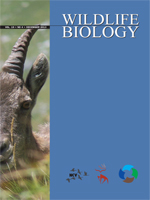The mortality process is a key component of avian population dynamics, and understanding factors that affect mortality is central to grouse conservation. Populations of greater sage-grouse Centrocercus urophasianus have declined across their range in western North America. We studied cause-specific mortality of radio-marked sage-grouse in Eureka County, Nevada, USA, during two seasons, nesting (2008-2012) and fall (2008-2010), when survival was known to be lower compared to other times of the year. We used known-fate and cumulative incidence function models to estimate weekly survival rates and cumulative risk of cause-specific mortalities, respectively. These methods allowed us to account for temporal variation in sample size and staggered entry of marked individuals into the sample to obtain robust estimates of survival and cause-specific mortality. We monitored 376 individual sage-grouse during the course of our study, and investigated 87 deaths. Predation was the major source of mortality, and accounted for 90% of all mortalities during our study. During the nesting season (1 April - 31 May), the cumulative risk of predation by raptors (0.10; 95% CI: 0.05-0.16) and mammals (0.08; 95% CI: 0.03-013) was relatively equal. In the fall (15 August - 31 October), the cumulative risk of mammal predation was greater (M(mam) = 0.12; 95% CI: 0.04-0.19) than either predation by raptors (M(rap) = 0.05; 95% CI: 0.00-0.10) or hunting harvest (M(hunt) = 0.02; 95% CI: 0.0-0.06). During both seasons, we observed relatively few additional sources of mortality (e.g. collision) and observed no evidence of disease-related mortality (e.g. West Nile Virus). In general, we found little evidence for intraseasonal temporal variation in survival, suggesting that the nesting and fall seasons represent biologically meaningful time intervals with respect to sage-grouse survival.
How to translate text using browser tools
1 December 2013
Intraseasonal variation in survival and probable causes of mortality in greater sage-grouse Centrocercus urophasianus
Erik J. Blomberg,
Daniel Gibson,
James S. Sedinger,
Michael L. Casazza,
Peter S. Coates

Wildlife Biology
Vol. 19 • No. 4
December 2013
Vol. 19 • No. 4
December 2013
cause-specific mortality
Centrocercus urophasianus
cumulative hazard function
greater sage-grouse
hunting
predation
survival




